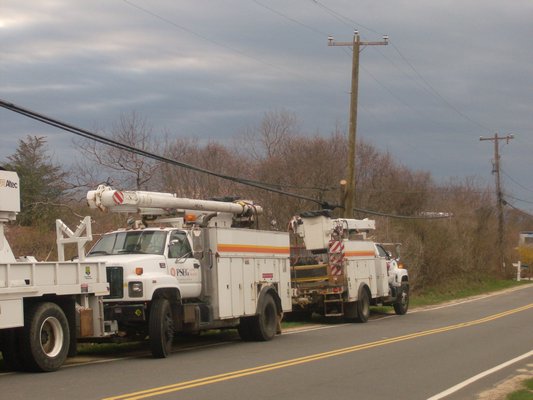
PSEG Long Island is in the beginning stages of a proposal to install a new underground transmission line that would run from its substation in Southampton Village at the intersection of North Sea Road and West Prospect Street to its Deerfield Substation in Water Mill on Water Mill-Towd Road.
The project would “increase the load capacity and reliability of the electric transmission system” on the South Fork, according to PSEG-LI officials.
The main feature of the project would be the installation of a new underground 138-kilovolt transmission line, which would run primarily along roadways on existing municipal rights-of-way.
An informational session on the project is set for Wednesday, December 6, from 1 to 3 and 5 to 7 p.m. in the Morris Room at Rogers Memorial Library in Southampton Village.
The “Southampton to Deerfield” project, as it’s being called, is being billed by PSEG-LI as “the most cost effective solution to meet the South Fork’s increasing electrical demand and need for reliable electrical service while minimizing disruptions to the community.”
The project is also consistent with the goals of New York’s Climate Leadership and Community Protection Act by supporting the transmission of wind energy on Long Island.
Jeremy Walsh, who works in communications for PSEG-LI, spoke more about why the project is important for area residents.
“This project is necessary because the South Fork continues to see growth in overall electrical demand,” he said. “To prepare for future power needs, PSEG Long Island must ensure it can transfer enough transmission-level voltage electricity between substations, where power is stepped down to lower voltages and sent out into neighborhoods via distribution circuits.”
The current transmission circuit between the substations operates at 69 kilovolts. The new line would augment the existing circuit, providing greater transmission capacity between the substations and creating redundancy, which Walsh said is important in the event that one line is taken out of service for maintenance or repair.
“Because the new transmission line will be underground, it will be protected from storms and severe weather, reducing outages in those situations,” he added.
Overhead and underground transmission lines already exist in the area. This proposed project will involve installing new equipment within the property of the substations, as well as installing an underground line. The plan does not call for any overhead equipment to be added, Walsh said, or for any existing overhead equipment to be removed.
Walsh elaborated further on what the next steps in the proposal would entail.
He pointed out that the voltage level associated with the project requires PSEG-LI to file an application for a certificate of environmental compatibility and public need with the New York State Public Service Commission. The PSC will review the application in detail, as well as hold informational forums and public statement hearings to consider input from the participating parties and the general public. An administrative law judge will preside over the gathering of public comments and all evidence relating to the project, Walsh said. Under New York State law, the PSC may adopt or reject PSEG-LI’s proposal, in whole or in part, or modify it based on the contents of the application and information gathered at public events. Walsh said that process would begin around February 2024 and is expected to take 12 to 15 months to complete.
If the PSC approves the application, an environmental management and construction plan (EM&CP) will be filed in cooperation with the application. The EM&CP details all environmental aspects, engineering design, and construction activities planned for the new underground transmission line.
Once the EM&CP is filed and approved, construction is expected to take between six and nine months. To allow time for all necessary review and approvals, construction would begin in the first or second quarter of 2026.
“The South Fork’s increasing electrical demand and need for reliable electrical service requires an additional investment in the infrastructure,” Walsh said. “This proposed project is a ‘best value’ solution that addresses these needs while minimizing disruptions to the community. In addition to cost, various other factors were considered, including community impact, environmental impact and long-term planning perspectives. This project was selected among the possible solutions because it best addressed these multiple criteria.”